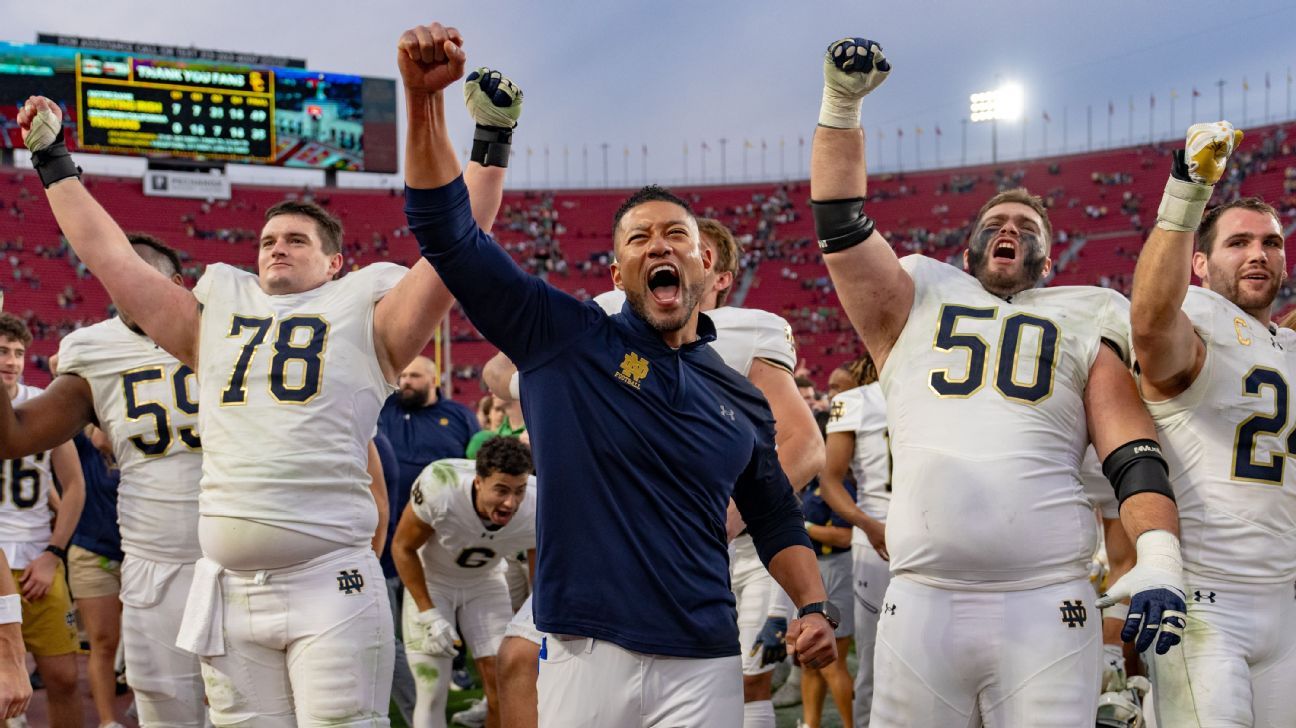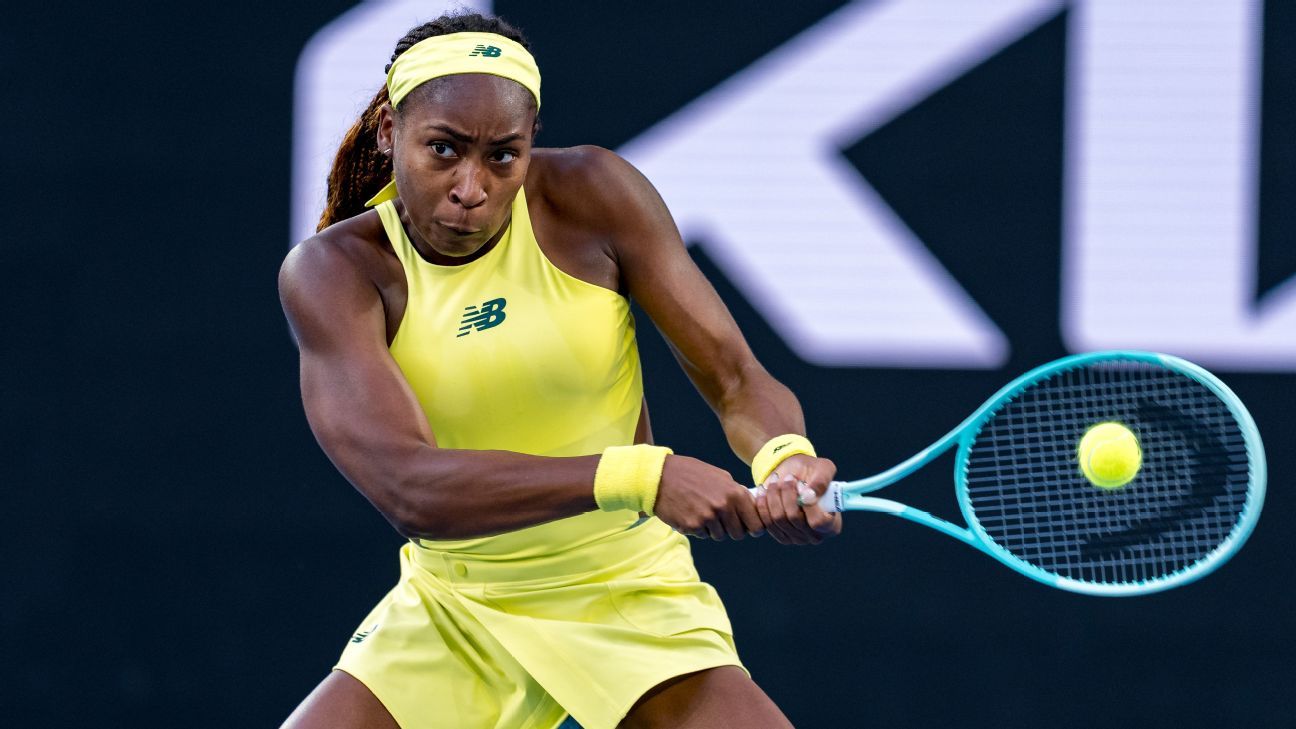The shining moment came on an autumn afternoon beneath a gray Cleveland sky.
On Sept. 23, 2021, the Chicago White Sox won the first game of a doubleheader 7-2. That victory clinched the franchise’s first division title since 2008. But because the game in question was the first of a twin bill, White Sox players and staff were forced to wait until after the nightcap for a Champagne shower.
Still, the atmosphere between games on the diamond at Progressive Field was celebratory.
Players milled about outside the visiting dugout, hats turned backward. Many took pictures, sporting fresh, black T-shirts with the words “CENTRAL CHAMPS” plastered across the chest in large block lettering. A band of visiting die-hards who’d made the trek across the Midwest, from the South Side to The Land, cheered on the scene from the first few rows.
A few steps away, the team’s 76-year-old skipper, Hall of Famer Tony La Russa, conducted an interview on the NBC Sports Chicago postgame show. A wry smile crept across his well-worn face. Hired before the season, the manager had been the subject of much doubt and criticism. Many had believed that his 10-year hiatus from the dugout would render him unprepared for the realities of the modern game.
For a season, he’d proven them wrong.
“We’ve all seen it. I’ve been with teams — I could name a couple — that had expectations, and it just bothered ’em, and they never lived up to it,” La Russa said. “This team, here we are, you know? We’re the champs, and we got 10 games left to play.”
Moments later, on the same show, general manager Rick Hahn echoed La Russa’s message.
“It’s a great feeling. Today is a day where the focus of that clubhouse is on celebrating what we were able to do so far, but frankly, you walk through there, and everyone is talking about how many more of these we hope to have and intend to have.”
Such was the energy of those days. In the end, it was fleeting. Two weeks later, the White Sox fell to the eventual AL champion Houston Astros in the ALDS, three games to one. In the aftermath, the White Sox turned their gaze forward. They had a young core, controllable superstars, a pitching staff with high-end talent — plenty of reason for optimism. The 93-win 2021 felt like a beginning.
“We have more to do,” La Russa told The Athletic after his squad’s season-ending loss to Houston.
Three years later, the joyousness of that afternoon in Cleveland reads like a hallucination.
How did the White Sox get here?
The 2024 White Sox are not just bad — they are historically abysmal. Through 131 games, they are on pace for the single worst record in modern baseball history. On Sunday, they lost their third straight to the Detroit Tigers and reached the 100-loss abyss a week before the end of August. In ’21, they won the division by 13 games over Cleveland. Today, they’re 44.5 games behind the Guardians with five weeks left in the regular season.
What La Russa said back in October 2021 still rings true: The Chicago White Sox indeed have a lot more to do. So how did it get this bad? What in the world happened here? How does a division-winning club with a bright future become a generational train wreck within the span of a presidential term?
No one factor turned the White Sox from juggernaut to punch line. The fall-off was brought on by a combination of institutional rigidity, a barren farm system that failed to restock the big-league roster and a wave of underperformance, natural aging and injuries that chipped away at multiple core pieces.
This was not a case of — as so often happens with closing windows — paying or extending the wrong players. The only key contributors on the ’21 White Sox who are still above-average every-day big leaguers are Dylan Cease, Carlos Rodón and Luis Robert Jr.
Everybody else either:
Experienced a dramatic, age-based decline in performance (Lance Lynn, Yasmani Grandal, José Abreu)
Didn’t maintain their level of play (Tim Anderson, Lucas Giolito)
Endured career-altering injuries that limited their ability or availability (Yoán Moncada, Eloy Jiménez, Robert, even though he still bangs)
Some of that was predictable and avoidable; some of it was not.
Nobody could have seen Anderson’s dramatic plunge coming. Grandal went from the game’s most valuable catcher to an unplayable husk in one winter. Chicago’s decisions to let Giolito, Abreu and Lynn walk in free agency look sound in retrospect.
But the club deserves some responsibility for the sudden, remarkable shift in fortune with Jiménez and Moncada. Both were top prospects acquired in trades, and both showed great promise that led to hefty extensions. Neither came remotely close to living up to expectations.
Injuries certainly played a role. But in the winter of 2021-22, the club failed to supplement a roster fresh off a 93-win season. Rodón left in free agency. The team’s biggest signing was a three-year deal for reliever Kendall Graveman. Team owner Jerry Reinsdorf kept his pocketbook clasped shut, and the 2022 Sox won 81 games.
The farm system, or lack thereof, was also to blame. Reinforcements never arrived — or they arrived and disappointed. Highly touted international prospects such as Bryan Ramos, Oscar Colás and Yoelqui Céspedes failed to develop intro contributors. No. 3 overall draft pick Andrew Vaughn, who debuted in 2021, is simply not an impact bat. That he remains the only position player drafted by Chicago in 2018 or 2019 who has appeared in the majors for the White Sox can be described only as a total failure.
It all begins at the top. Reinsdorf’s fealty to the leadership group that helped bring about the 2005 World Series, namely Kenny Williams and Rick Hahn, kept the entire organization in stasis. Continuity is a good thing; falling behind the times is not. The decision to hire La Russa was Reinsdorf’s. That managerial hire limited the club’s ability to squeeze value out of every lemon, a dynamic that became apparent during that disappointing 2022 season.
La Russa left that winter. Hahn replaced him with Pedro Grifol, a gruff, bespectacled, first-time skipper intent on keeping the window of contention pried open. His message failed to resonate — or maybe the players simply weren’t good enough. The 2023 White Sox stumbled out of the gate, and Hahn himself was canned after the trade deadline.
He was replaced at the helm by Chris Getz, who served in the old regime as the farm director. Change, within limits. That shift in leadership was a clear admission that a certain era of White Sox baseball had ended. Hahn and his group had failed. The roster was part graveyard, part infirmary. The window had been slammed shut.
And things were about to get worse.
Where do the White Sox go from here?
Once this season mercifully concludes with Game 162 on Sept. 29 in Detroit, the White Sox will enter an offseason that will be defined by two massive decisions: 1) who the new manager will be and 2) whether to deal away Crochet and/or Robert after opting to hold on to both at this year’s trade deadline.
The process of finding a skipper is already well underway following the early August firing of Grifol, with Getz stating that the team is “focused on candidates that are currently with other organizations and in uniform.” Tabbing former All-Star outfielder Grady Sizemore as the interim manager after he spent the early part of the season on Grifol’s coaching staff was an intriguing pivot, albeit one that is expected to be temporary. Perhaps Sizemore captures the clubhouse in such an emphatic way that he seizes the full-time job, but it’s far more likely that he’s simply getting his feet wet for a future opportunity in a dugout elsewhere.
Expect Getz and Co. to explore external options with strong reputations of player development and building winning culture from the ground up. There’s little use in bringing in a Dusty Baker type who wants to win now. We won’t speculate on specific names here; it’s likely that the top candidates will start to emerge shortly after the regular season concludes.
Instead, let’s consider the situation this new manager will be stepping into. There is recent precedent for a manager hired at the absolute nadir of a rebuild sticking around long enough to see the team become a winner with Brandon Hyde in Baltimore. The Orioles hired Hyde, then a bench coach with the Cubs, to replace Buck Showalter following a 115-loss season in 2018. A whole lot more losing followed over Hyde’s first three years at the helm before Baltimore finally launched itself out of the rebuild to become one of the premier teams in the American League, thanks in large part to an exquisite job of team-building by the front office. While Hyde certainly played a role in the smooth and speedy transition from rebuild to contender, a lot had to go right above his head for the Orioles to get to where they are. The same will be true in Chicago.
Hyde’s trajectory is a best-case scenario for a manager hired under these circumstances, and it’s hardly a given that it will work out over the long haul for Chicago’s next skipper. The most important thing, no matter who takes the job, is that the new manager knows what he’s signing up for and can effectively communicate the intentions of building from the ground up, rather than professing disillusions about the current state of the roster.
The expectations for this to be a multiyear process must be crystal-clear from the top on down, and how the manager communicates to both his own team and the fan base is a crucial component of this. Grifol failed at that time and again during his short stint in Chicago; it’s vital that the next manager exhibits a combination of patience and commitment to a bigger-picture vision, rather than a daily standard of “kicking ass” when the roster is fundamentally ill-equipped to do so. That’s not to say the new coaching staff and players won’t be trying to win every day, but there needs to be a coherent vision rooted in the reality of the situation, with a longer-term focus that requires investment in and proper development of young players.
As for Robert and Crochet, there’s a strong argument that Chicago should’ve dealt them at this year’s deadline, especially as they were two of the rare impact players reportedly available in trade talks in July. But Crochet’s desire for a contract extension from a potential new team — as a financial guardrail against the injury risk associated with pitching far beyond his previous career-high workload — certainly complicated matters and made it more difficult for Chicago to execute a trade on a tight deadline.
That said, Crochet will remain plenty attractive to suitors this winter as a 25-year-old lefty who should be getting Cy Young votes and is under contract through 2026. With more time to survey what could be an even bigger market than what existed in July, the White Sox could — and arguably should — net a significant haul for Crochet this winter while his value remains sky-high.
Robert is a bit different for a few reasons. For one, he’s not exactly having his best season. Although he has shown flashes of his all-around talent, the production has hardly reflected that of a superstar. That said, can you blame him for struggling to maximize his talents while playing on one of the worst teams of all time?
Still, we’re talking about a 27-year-old outfielder with nearly unrivaled physical tools who is under contract next season for a modest total of $15 million, plus two club options for 2026 and 2027 at $20 million apiece. Robert at his best is an absolute bargain at those prices, which is why his trade value remains high despite his underwhelming season and sketchy track record of staying healthy.
However, while it’s difficult to envision the White Sox being a winning team before Crochet’s contract is up, Robert’s potential three years remaining make the equation a bit different, as Chicago could decide that he’s worth keeping as a franchise center fielder who could still be in place on the next good Sox team. But what feels most likely is that the Sox hold on to Robert, hope for a better first half in 2025 — one that would warrant more feverish interest at next year’s trade deadline — and capitalize on a blockbuster deal then.
Regardless of whether Crochet and Robert are dealt, Chicago’s payroll is sure to plummet entering next year. Catcher Max Stassi’s $7.5 million club option probably won’t be picked up, and Moncada has a $25 million club option that is certain to be declined. Andrew Benintendi ($17.1M) and Robert ($15M) are the only players projected to make eight figures next season, leaving Chicago with a payroll that will likely rank in the bottom third of the league, barring any surprising, high-priced additions this winter (recall that entering this wretched season, Chicago’s Opening Day payroll ranked 15th in MLB). If the White Sox are going to spend money in free agency this winter, expect them to target shorter-term deals for veterans with upside whom they can flip for prospects next July, a la Erick Fedde and Tommy Pham.
Beyond that, next year will be about figuring out which players on the current roster are worth giving playing time in the hopes that they can establish themselves as viable and productive every-day players at the big-league level. As such, let’s turn our attention to the talent in-house and take stock of what Chicago already has in the pipeline that could help sooner rather than later.
If there is any hope for the short-to-medium-term future of the White Sox, it is unquestionably rooted in the organization’s burgeoning collection of young arms. At the big-league level, right-hander Jonathan Cannon has all the makings of an innings-eating workhorse, and Drew Thorpe showed flashes of brilliance in his first handful of starts before two blow-up outings and a trip to the IL due to a strained flexor derailed his momentum. Those two look like strong rotation candidates entering 2025, but the real excitement is found in the arms still climbing the minor-league ladder.
Chicago has a strong argument for having the two best left-handed pitching prospects in the minor leagues in Noah Schultz and Hagen Smith, two 21-year-olds with hellacious stuff from unusual arm slots who have dominated batters in recent years: Schultz in the minors since being Chicago’s first-round draft pick in 2022 out of an Illinois high school and Smith in the SEC at the University of Arkansas before he was selected fifth by the White Sox in this year’s draft. Should Chicago keep Crochet, it’s difficult to imagine a nastier trio of southpaws in the same rotation, but even if Crochet is dealt before these two debut, Smith and Schultz look like ideal arms to build around. Beyond them, there’s a quartet of talented arms acquired in recent trades — Ky Bush, Jake Eder, Jairo Iriarte and Nick Nastrini — who should contribute to the 2025 pitching staff, while Seth Keener and Grant Taylor are recent draft picks off to strong starts to their pro careers but a little bit further away.
The outlook is less rosy when it comes to the bats. Colson Montgomery entered the season as one of the top handful of infield prospects in the league, but he has struggled considerably in Triple-A (.204/.325/.364). Still just 22, he has ample time to get back on track, but it’s unclear how soon we’ll see him in Chicago, let alone how soon we should be counting on him to be one of Chicago’s best players.
Third baseman Bryan Ramos has gone backward this season after breaking out in Double-A a year ago. Shortstop Jacob Gonzalez, Chicago’s first-round pick last year, has a .593 OPS in Double-A. Among White Sox position-player prospects, the only surefire 2025 contributor appears to be switch-hitting catcher Edgar Quero. Acquired from the Angels last summer, Quero reached Triple-A as a 21-year-old and has always hit well, albeit with varying degrees of power. Expect to see him splitting time with Korey Lee behind the plate at some point next season.
The White Sox will also have to hope the crop of teenage bats (Alexander Albertus, Jeral Perez, William Bergolla) acquired at this year’s deadline will show more promise than the highest-ranked youngster they got from San Diego in the Dylan Cease trade, Samuel Zavala, who has a .646 OPS in High-A. On a positive note, the most intriguing ultra-young bat to know is George Wolkow, a gigantic, 18-year-old outfielder with seismic raw power, though he has serious strikeout issues that will need to be corrected for his production to hold up at higher levels.
All of which is to say: While there are a ton of exciting arms making meaningful strides toward contributing in Chicago in the near future, at the end of the day, you need to score more runs than the other team. As things stand, it’s not readily apparent how soon the White Sox can field a formidable lineup capable of supporting what projects to be a sneaky solid pitching staff in the not-too-distant future.
Among the many tall tasks that await Getz and his new mystery manager, building a competent offense will be one of the toughest.





